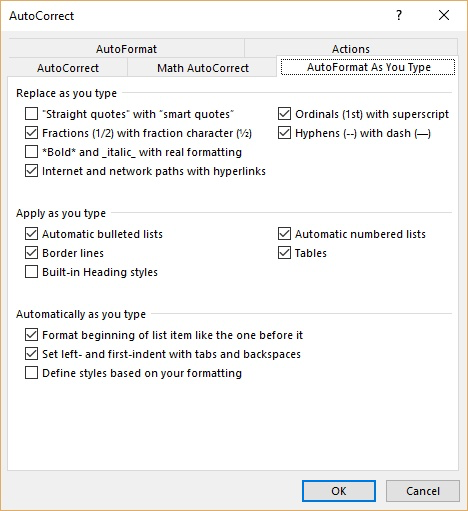Please Note: This article is written for users of the following Microsoft Word versions: 2007, 2010, 2013, 2016, 2019, and Word in Microsoft 365. If you are using an earlier version (Word 2003 or earlier), this tip may not work for you. For a version of this tip written specifically for earlier versions of Word, click here: Turning Off Automatic Numbered Lists.
Written by Allen Wyatt (last updated February 9, 2024)
This tip applies to Word 2007, 2010, 2013, 2016, 2019, and Word in Microsoft 365
One of the ways in which Word tries to help you create documents faster is by automatically applying formatting to your document, based on what you type. One incarnation of this feature is seen when Word creates automatic numbered lists for you. When you enter some text that Word thinks should be a numbered list, and then press Enter, Word formats the paragraph with a hanging indent and places an appropriate number at the beginning of it. In addition, Word assumes the next paragraph will be part of the same numbered list.
For instance, if you type a number or letter, a period, and then the Space Bar or the Tab key, Word formats the paragraph as a numbered list. If you didn't want the paragraph to be a numbered list item, you can cancel the formatting done by Word by immediately pressing Ctrl+Z after the automatic formatting is applied. If the automatic formatting bothers you a lot, you can follow these steps to turn it off:

Figure 1. The AutoFormat As You Type tab of the AutoCorrect dialog box.
WordTips is your source for cost-effective Microsoft Word training. (Microsoft Word is the most popular word processing software in the world.) This tip (6008) applies to Microsoft Word 2007, 2010, 2013, 2016, 2019, and Word in Microsoft 365. You can find a version of this tip for the older menu interface of Word here: Turning Off Automatic Numbered Lists.

The First and Last Word on Word! Bestselling For Dummies author Dan Gookin puts his usual fun and friendly candor back to work to show you how to navigate Word 2013. Spend more time working and less time trying to figure it all out! Check out Word 2013 For Dummies today!
When you convert a paragraph to a numbered list, Word adds a number at the start of the paragraph, as you would expect. ...
Discover MoreWord's automatic numbering formats allow you to easily create lists that have one leading zero. If you want more than one ...
Discover MoreIf you have a numbered list in a document, you might want to convert it to regular, non-dynamic text and not lose the ...
Discover MoreFREE SERVICE: Get tips like this every week in WordTips, a free productivity newsletter. Enter your address and click "Subscribe."
There are currently no comments for this tip. (Be the first to leave your comment—just use the simple form above!)
Got a version of Word that uses the ribbon interface (Word 2007 or later)? This site is for you! If you use an earlier version of Word, visit our WordTips site focusing on the menu interface.
Visit the WordTips channel on YouTube
FREE SERVICE: Get tips like this every week in WordTips, a free productivity newsletter. Enter your address and click "Subscribe."
Copyright © 2024 Sharon Parq Associates, Inc.
Comments